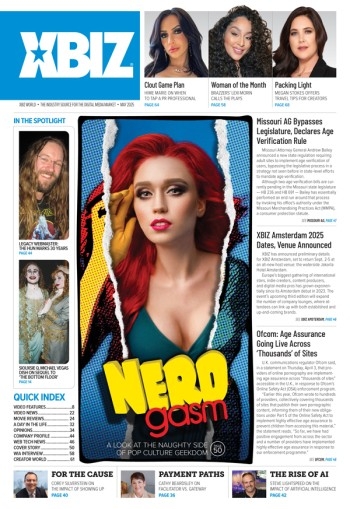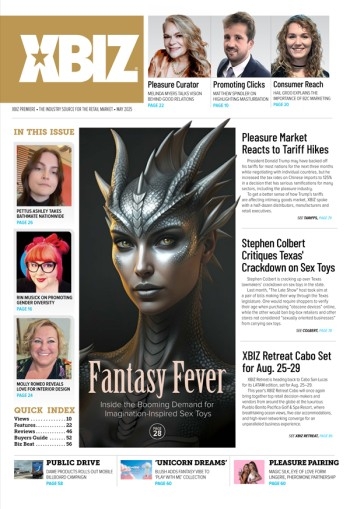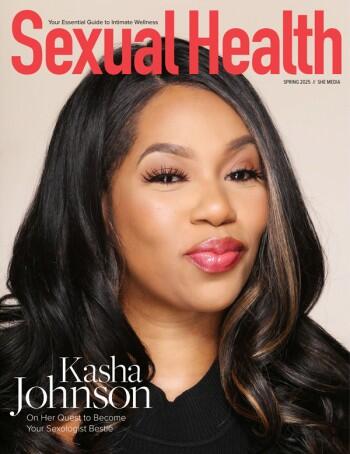We’ve seen a lot of changes in the sex retail trade in the last few years. More women have become regular customers, more companies are embracing sex education as part of their branding, there’s increased awareness of the importance of quality design and materials, and there’s wider discussion of the value of sexual pleasure for older people and folks with disabilities. While I think there are many different reasons for these shifts, one factor is a deeper understanding of the significance of sexual health.
Conversations about sexual health have evolved in many ways. For a long time, that phrase was mostly used to talk about avoiding sexually transmitted infections and unintended pregnancy. But people have been letting go of the old medical model of sexuality and rethinking what sexual health means. The changes in the industry reflect some of these larger trends.
Even if your company doesn’t sell the kinds of how-to books that customers are purchasing, it’s worth creating an in-house library for your staff to read. It’s a simple and cost-effective way to help them enhance their knowledge and skills.
For example, we’ve been seeing a lot more discussion of sexual pleasure and health for older folks. In part, this is because the baby boomers are moving into their 60s and 70s, so there are more people than ever before who want to find ways to keep their sexuality thriving as they get older. (Pro tip: keep your eyes open for ‘The Ultimate Guide to Sex Over Fifty’ by Joan Price. You’ll want it on your shelves.) But it’s also because there’s more awareness of the value of sexual pleasure and its effect on overall health, no matter how old you are.
Similarly, as women became consistent purchasers of sex toys, they demanded more information and higher quality products. After all, nobody is born knowing anything about sex, so we all have to learn it somewhere. And while many men are hesitant to admit that they don’t know something about sex, women don’t tend to have the same resistance to asking for directions. Women have also been much pickier about the products they put inside their bodies, which helped drive the demand for body-safe materials and lubricants. Both of these factors were influential as the industry shifted to make sexual health more of a priority.
But while there have been a few different reasons for the industry to think about sexual health and wellbeing when considering product design and branding and education efforts, I’m not sure that there’s a lot of clarity about what that means. That’s not a surprise because there’s not much to go on. One of the better definitions comes from the World Association of Sexology, which says that sexual health is the “state of physical, emotional, mental and social well-being in relation to sexuality; it is not merely the absence of disease, dysfunction or infirmity. Sexual health requires a positive and respectful approach to sexuality and sexual relationships, as well as the possibility of having pleasurable and safe sexual experiences, free of coercion, discrimination and violence.”
That makes a lot of sense, but what exactly does “physical, emotional, mental and social well-being in relation to sexuality” mean? And how can retailers and manufacturers use a circular definition like that? It’s tricky because something that supports well-being for one person might not do the same thing for someone else.
Fortunately, many of the steps that the sex retail trade is already taking are part of this. Recognizing the value of sexual diversity and the many different ways that individual people vary is a big piece. So is responding to customer demand for better information about products, how to use them, and how to talk about them with partners.
I think that it’s significant that the sex toy trade has been responsive to customer demand. The fields of medical or mental health have a lot of history of assuming that they know what sexual health is, which means there’s a lot of inertia that makes it difficult to change directions. But the sexual product industry is far more market-driven, so as customer attitudes and demands changed, manufacturers and retailers have been faster to change strategies to match than doctors or therapists. So unlike those professions, the industry has created more room for sexual health and well-being to be based on customer needs and demands. Given that well-being can only be defined by the individual, I think that’s important.
We’re long past the days when you could create or market a toy without knowing about sexual anatomy, how people use sex toys, and the concerns that people are facing. Helping people find their sexual well-being means knowing about how people have sex, how they use sex toys, ways they can enhance or improve their product satisfaction, info about safety and common pitfalls, how to talk about all of this with a partner, a therapist, or a medical professional (as needed), and more. All of that only works when the people designing and selling sex products have the training to make it work.
It’s a good thing that there are lots of resources to help you make that easier. Even if your company doesn’t sell the kinds of how-to books that customers are purchasing, it’s worth creating an in-house library for your staff to read. It’s a simple and cost effective way to help them enhance their knowledge and skills. There are also some good videos, though videos often have less detail than you might be looking for. And there are plenty of websites, workshop teachers, and much more information than there used to be. It’s a lot easier to keep up on sexual health and pleasure topics than ever before. Of course, lots of people prefer to learn from the experts, whether it’s part of a seminar, a webinar, or an in-house training.
Charlie Glickman PhD is a sexuality speaker, trainer, writer, blogger, and coach. He’s an AASECT-certified sex educator and has been working in this field for over 20 years. Charlie is the co-author of The Ultimate Guide to Prostate Pleasure: Erotic Exploration for Men and Their Partners. Find out more about him at www.charlieglickman.com or on Twitter and Facebook.






